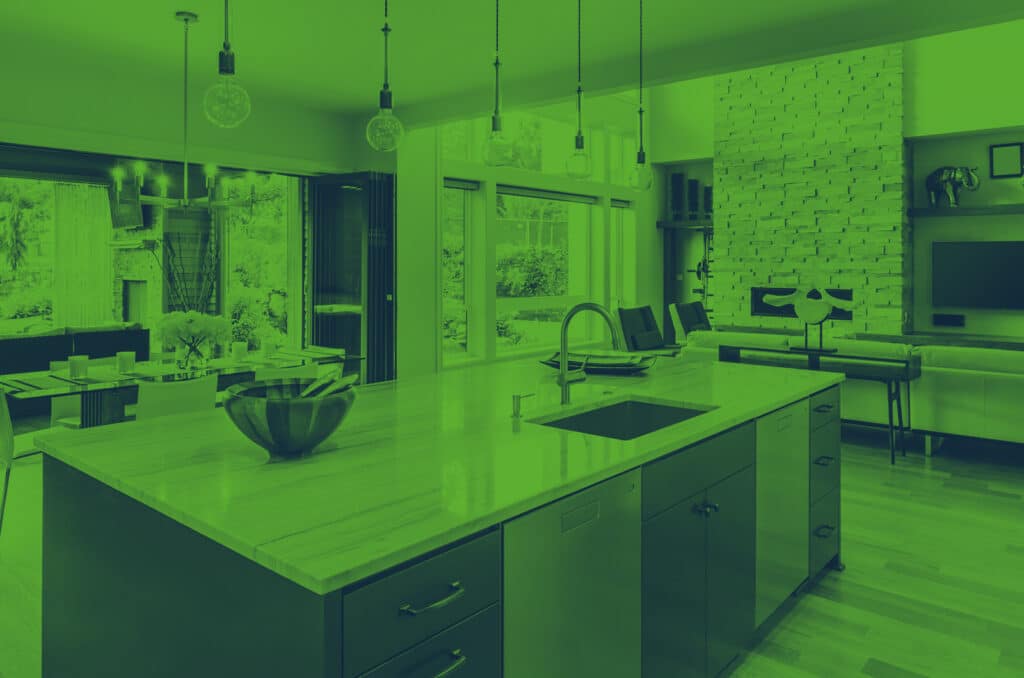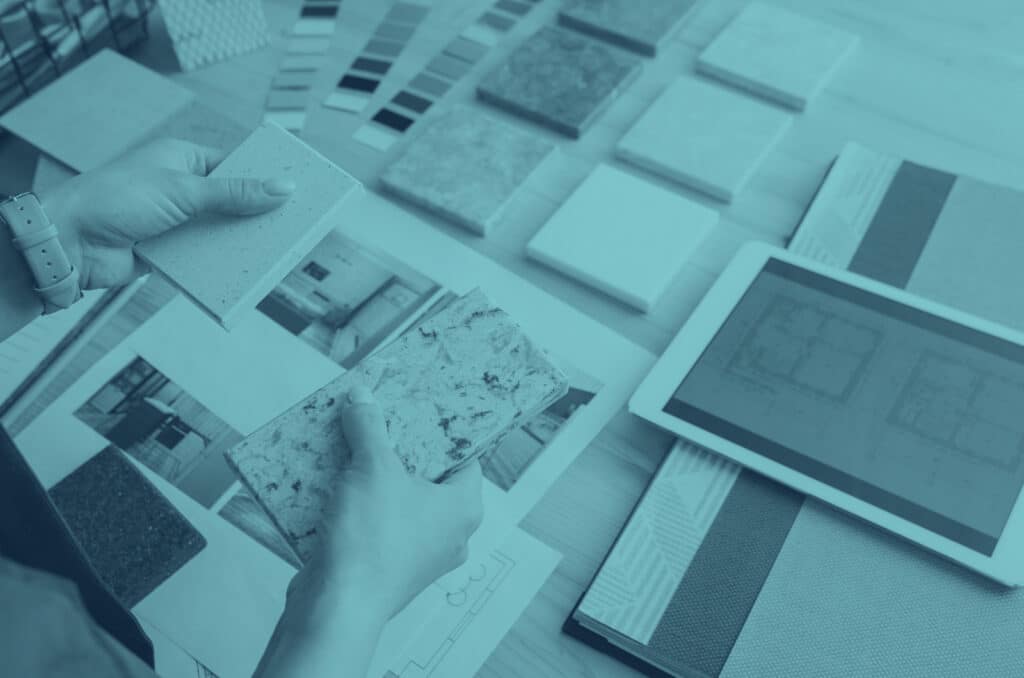Beautiful spaces don't just happen by accident; lots of artistic planning, logical thinking, and hard work go into their creation. The main purpose of interior design is to create a comfortable and aesthetically-pleasing interior space for people to enjoy. With creative flair and a brave imagination, interior designers turn private and public buildings into welcoming, awe-inducing, comforting, stunning, and functional spaces to spend time in. It’s an industry that’s constantly evolving as a result of social, technological, and fashion trends, and it’s all connected, and increasingly in demand. The more ‘Instagrammable’ a home, bar, or hotel lobby, the happier the client!
What is an interior designer?
With creative and imaginative skills, interior designers can transform ordinary offices, houses, hotels, and commercial buildings into masterpieces. They take a concept for a room or building and create a plan to bring atmosphere, style, and functionality to it, transforming an idea and a client’s dream space into a reality. Interior designers work with a wide range of different sectors, from corporations, retail, and hospitality, to hotels and residential developments, as well as private properties and homes.

It’s important that interior designers provide the most accurate advice and realistic plans to ensure the safety of those who live or work within the space in question. And it’s vital they’re trained and knowledgeable in all areas of building, health and safety, and product regulations, as they work to improve public spaces.
What does an interior designer do?
The most obvious part of an interior designer’s day is brainstorming ideas, sketching plans, and producing final designs for clients. However, this is not the only, nor the main, part of the job. One of the most important aspects of the role is meeting with clients to discuss their vision, aesthetic and functional requirements, and working out a reasonable budget.
Most employed interior designers work in studios, though self-employed designers tend to work from home. They’ll typically work regular hours but not necessarily in a standard shift pattern, and evening and weekend work is common. Since designers are often an integral part of development and construction, they need to be flexible with their time to work around contractors’ and clients’ schedules.
Depending on the task in hand, interior designers will sometimes organise the work of plumbers, electricians, builders, decorators, and more. When working on-site, they’ll be suited and booted in appropriate clothing, which is sometimes overalls and a hard hat. Essentially, interior designers oversee all elements of the project from start to finish, working on every detail in between; from sourcing fixtures, paint, and textiles, to ordering lighting and fittings, and recommending final furnishings.
One of the challenges interior designers regularly face is dealing with clients who are indecisive about what they want the final product to look like. To overcome this, designers must guide their clients through the creative process with them, keeping communication and intentions clear at all times. This is the best way to avoid any confusion further down the line! A well-defined brief from the offset and visual examples that show variety enable clients to make decisions more effectively.
What's the difference between an interior designer and an interior decorator?
Decorators are responsible for the final touches of creating a beautiful environment, giving interior spaces the right lighting, paintwork, art, furniture, and more. Once the vision and plan have been finalised, a decorator can get to work. But who does the planning? It’s the interior designers who map out the functional, structural, and aesthetic idea for living or public spaces. Because interior designers can make significant changes to the layout of a building, they must obtain a licence to practice. On the contrary, interior decorators don’t need a licence or qualification.
How to become an interior designer
Does interior design sound like the right career for you? Here, we look at the skills, qualifications and experience which can help you fulfil this dream.
What skills do you need to become an interior designer?
Do you have an eye for detail? Do you like to get stuck into an artistic project? Do you often think about making changes to the room you’re in? Then you’re onto a good start! With a natural creative ability, excellent organisation and project management skills, and strong communication skills, you’re sure to tick the boxes for interior design.

However, to be successful in the field, there are some skills you need to develop through learning and experience. There’s a lot of administration work involved, and you’ll be working with specifications, invoices and budgets, so it’s important to develop sharp mathematical and business skills. From this, you’ll also be expected to work to tight deadlines and be adaptable when plans change or budgets are limited. Most designers get better at this with on-the-job experience.
Being able to understand your clients is key. To do that, you should be a good listener first and foremost, so your clients feel you properly grasp their vision. This will help you to earn their trust, so when you present design concepts and negotiate plans during the project, the client will support your decisions. Also, don’t underestimate how much time it takes to thoroughly develop designs, especially with very technical contractor specifications. That’s why you should be patient, with careful attention to detail.
Remember, you’re not expected to be a specialist in everything, that’s why it’s useful to have tradespeople, such as electricians, sense-check your plans from a practical and compliance perspective. But double-checking numbers, like furniture heights, is common sense when sourcing supplies. It’s an interior designer's job to spend time checking the suitability of different products and materials for each environment, ensuring quality, durability, and fire-safety, for example. The trick is to be thorough.
What qualifications do you need to become an interior designer?
In the UK, anyone can call themselves an interior designer. Therefore, there needs to be a distinction between trained professionals and hobbyists. In almost all cases, industry employers will hire those with a qualification in a relevant subject, such as architecture, fine art, furniture design, interior/spatial design, interior architecture, textile design, and 3D design. If you’re an aspiring interior designer, we suggest you start by building the foundations, which is the knowledge and theory. Once you’ve got a core understanding of historical and modern trends, key fabrics, textiles, and FF&E (furniture, fixtures, and equipment), this will set you apart from the rest.
It’s recommended you first achieve at least a Grade C or above in GCSE English and Maths, or a Level 2 equivalent. This is because communication and mathematical equations are an important part of the job. It would also be beneficial to achieve an art GCSE or A-level. Then, you can focus on gaining relevant qualifications from level 3 and above. For example, our level 3 interior design course, which can be studied online with the unlimited support of a personal tutor. You don’t necessarily need a degree in design in order to enter the industry; a certificate, coupled with relevant work experience, volunteering, a portfolio, and a passion and talent for design, is often enough.
What experience do you need to become an interior designer?
Once you’re qualified, it’s time to put your knowledge to the test and develop your skills through hands-on practice. Although, remember it’s a marathon, not a sprint! You might feel pressure to quickly get a handful of projects under your belt and in your portfolio, but we’d urge you to spend time creating different design schemes and mood boards instead, so you can show variety. As most design projects can be rendered digitally, 2D, 3D, and floor plans are a great way to showcase what you would do with a real-life project; with no budget restrictions, you can really let your imagination run free to create innovative designs.
To build your confidence, spend time styling your own home and those of friends or family. Then, ensure you take professional-quality photos of your finished products, as high-quality images are crucial for showcasing the standard of your work. Making use of social media, especially Instagram, is also essential for promoting your abilities.
As you gain more experience, you’ll notice that you’re passionate about certain styles, such as minimalism or art deco, or you want to specialise in a niche, like tiny homes or loft conversions. Before long, you’ll be attracting interest in your work and you’ll have a great portfolio that you can use to land an internship or junior role.
What are the benefits of working in interior design?
The most obvious benefit to working in this type of career is the creative freedom you’re given. For passionate artists, the idea of being paid to imagine, create, and innovate is a dream come true, and it’s equally as exciting to work alongside other creative professionals, too. What’s more, your skills are sought after, because at some point, almost everyone needs the expertise of an interior designer. This means it’s a profitable and expanding industry.
With the flexibility to either work full-time or part-time (making a second income on the side), you have the freedom to decide how your job fits around your lifestyle. You can be your own boss and become self-employed with a private license, and work as much or as little as you choose. Yet, of all the benefits, it’s the sense of achievement and reward you’ll get from each completed project that is the icing on the cake.

How much does an interior designer make?
As with all professions, interior designers must work their way up the ladder, and starting salaries for junior designers range from £18,000 to £23,000 annually. From there, the range jumps significantly, depending on location and experience, which sees many designers in the £25,000 and £40,000 earnings bracket. As interior designers become senior specialists, they can reach £45,000+, while directors can earn up to £75,000. Basically, if you want to earn a decent salary and you’re prepared to put in the work to develop the reputation, your salary as an interior designer can grow drastically, particularly when you're involved with high-profile, luxury, and bespoke projects.
[career-guide-earnings]
Is there career progression in interior design?
As mentioned above, the earning potential in interior design increases with experience, but it also varies based on the niche you specialise in. The most important thing for designers to do is decide what areas they’re most passionate about and immerse themselves in that. This can lead to several specialist career paths. For example, you could become a visual merchandiser, responsible for creating interesting designs for visual displays at shops and other retail outlets.
If you’d like to take the first step towards a career in interior design, Oxbridge can help you secure the qualifications you need. For more information, head over to our homepage or give our experienced course advisers a call on 0121 630 3000.
[career-guide-related-courses]